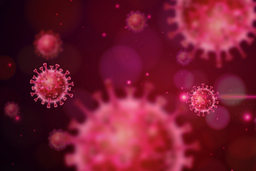Pharmacotherapies for COVID-19
TECHNOLOGY NUMBER: 2020-487
Tags:

OVERVIEW
A pipeline for quantitative, high-throughput image-based screening of SARS-CoV-1 infection- Identifies individual agents that reduce viral infectivity of SARS-CoV-2 infected cells
- Promotes future design of anti-viral drugs or combinations of existing anti-viral agents
MODALITY
Small molecule pharmacotherapies; administered orally or intravenously, depending on the drug candidate
INDICATION
Treatment of SARS-CoV-2 (COVID-19) infection and related complications
PUBLICATIONS
"Proxalutamide reduces SARS-CoV-2 infection and associated inflammatory response"
INTELLECTUAL PROPERTY
Patent pending
BACKGROUND
The ongoing effects of the COVID-19 pandemic highlight the need for rapidly deployable interventions to reduce the morbidity and mortality of the disease. Severe acute respiratory syndrome coronavirus (SARS-CoV-2) is an enveloped, single stranded RNA beta-coronavirus that leads to flu-like symptoms, and which may progress in severity to cause acute respiratory distress syndrome, heart arrhythmias, cerebrovascular accidents, and death. In consideration of therapeutic agents for this illness, the repurposing of existing antiviral therapies holds promise in the management of COVID-19. The use of remdesivir, a monophosphoramidate prodrug of a nucleoside inhibitor developed for Ebola virus treatment, has yielded positive results after its transitioned use against the SARS-CoV2 virus. The benefits of repurposing existing drugs include known safety profiles, established supply chains, and an abbreviated timeframe needed for development. It is possible to identify the pathways and the processes underlying infection through morphological profiling, permitting targeted screening focused on a specific biological process or targeting of host processes that limit viral infections. The resulting identification of multiple anti-viral mechanisms allows for the rational design of drug combinations.
INNOVATION
Researchers have identified compounds with antiviral activity against SARS-CoV-2 through a fully developed, high-content screening pipeline that screens previously develop drugs against the SARS-Cov-2 virus. Initial in vitro screening passes identified 132 compounds which show moderately dose-responsive anti-viral behavior, six of which were previously known to have anti-viral activity. This screening process included high content imaging which characterizes the mechanism of action of the effective drugs. The inventors leveraged machine learning approaches to create an assay metric that accurately and robustly identifies features that predict antiviral efficacy and mechanism of action. Additionally, approved drugs served as chemical probes to understand the biology of viral infection and make new associations between COVID-19 and molecular pathways that influence pathogenesis of the disease. This approach enables the identification of multiple anti-viral mechanisms, allowing for the rational future design of drug combinations or, conversely, revealing drugs that exacerbate infectivity or are associated with cytotoxicity. The assay also permits evaluation of drug combinations, or cocktails, which may hold synergistic efficacy against the virus. This approach is versatile and can even identify emergent properties of the infection as well as novel phenotypes that can be perturbed through chemical inhibition. Overall, this high content bioimaging-based assay has proven to be highly robust and informative and has already led to the identification of FDA approved drugs that can be rapidly translated into clinical use.